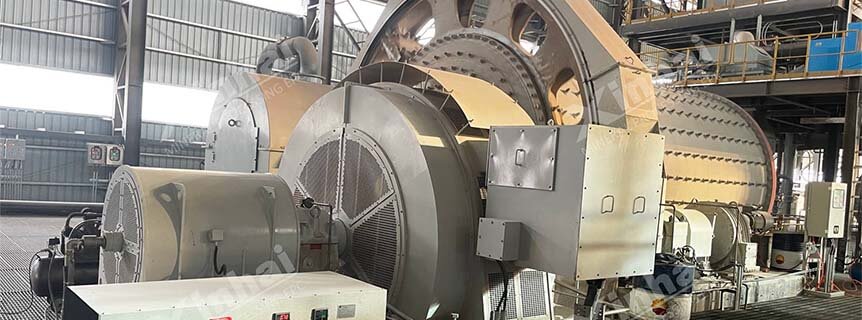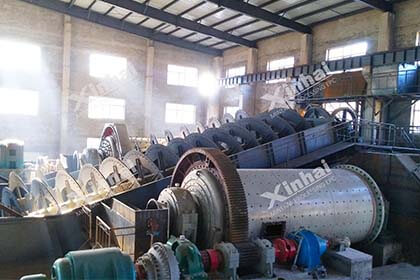A Comprehensive Guide to Rod Mill Applications in Metalworking
 Laura
Laura
 Oct 31, 2024
Oct 31, 2024
 754
754
If you want to know more details about equipment, solutions, etc, please click the button below for free consultation, or leave your requirements!

( How rod mills transform metalworking processes )
In the world of metalworking, the quest for efficiency, precision, and quality is paramount. Among the various tools and machinery that facilitate this quest, rod mills play a crucial role. Rod mills are a type of grinding mill that is used to break down materials into finer particles, particularly in the production of metals. This comprehensive guide aims to explore the applications of rod mills in metalworking, detailing their functions, benefits, and the industries that utilize them.
01What is a Rod Mill?
BackA rod mill is a type of grinding mill that uses long rods for grinding media. Unlike ball mills, which use spherical balls, rod mills rely on the linear motion of rods to crush and grind materials. This design allows for the production of finer particles with a more uniform size distribution. Rod mills are typically used in the primary and secondary milling processes in various industries, particularly in the mining and metalworking sectors.
02Key Features of Rod Mills
Back1. Design and Structure
Rod mills consist of a cylindrical shell that is filled with rods, typically made of steel or other hard materials. The rods are usually 1.5 to 2.5 meters long and 25 to 150 mm in diameter. The shell is mounted on a horizontal axis, and the rotation of the mill causes the rods to tumble and grind the material.
2. Grinding Mechanism
The grinding action in rod mills is primarily due to the impact and attrition forces generated by the rods as they collide with the material and each other. This mechanism allows for a more selective grinding process, which can be beneficial in achieving the desired particle size and shape.
3. Capacity and Efficiency
Rod mills can handle large volumes of material and are capable of processing a wide range of ores and minerals. Their efficiency is influenced by factors such as the length of the rods, the speed of rotation, and the type of material being processed.
03Applications of Rod Mills in Metalworking
Back1. Primary Grinding of Ores
One of the primary applications of rod mills in metalworking is the grinding of ores. In the mining industry, ores are extracted from the earth and need to be crushed and ground to liberate the valuable metals they contain. Rod mills are particularly effective in this stage of processing due to their ability to produce a coarse product that can be further processed in other milling circuits.
Advantages:
- Coarse Product: Rod mills produce a coarser product compared to ball mills, which can be beneficial for separating valuable minerals from gangue materials.
- Reduced Overgrinding: The linear motion of the rods minimizes overgrinding, ensuring that the desired particle size is achieved without excessive energy consumption.
2. Secondary Grinding
After primary grinding, the material may require further reduction in size to achieve the desired specifications. Rod mills are often employed in secondary grinding applications, where they can refine the material down to finer sizes.
Advantages:
- Uniform Particle Size: Rod mills produce a more uniform particle size distribution, which is essential for subsequent processing steps such as flotation or leaching.
- Lower Energy Consumption: The efficient grinding action of rod mills can lead to lower energy costs compared to other milling methods.
3. Production of Steel Rods
In the metalworking industry, rod mills are also used in the production of steel rods. These rods are essential components for various applications, including construction, manufacturing, and automotive industries.
Advantages:
- Quality Control: Rod mills allow for precise control over the diameter and length of the rods produced, ensuring that they meet industry standards.
- Versatility: Steel rods can be produced in various grades and specifications, accommodating a wide range of applications.
4. Recycling and Scrap Processing
Rod mills play a vital role in the recycling of metal scraps. In this context, they are used to crush and grind scrap metal, making it suitable for reprocessing and remelting.
Advantages:
- Material Recovery: By efficiently grinding scrap metal, rod mills help recover valuable materials that can be reused in the production of new metal products.
- Environmental Benefits: The recycling process reduces the need for raw material extraction, contributing to more sustainable metalworking practices.
5. Preparation of Feed for Concentration Processes
In mineral processing, rod mills are often used to prepare feed for concentration processes such as flotation and magnetic separation. The uniform particle size produced by rod mills enhances the efficiency of these processes.
Advantages:
- Improved Recovery Rates: The consistent particle size distribution helps maximize recovery rates during concentration, leading to higher yields of valuable minerals.
- Enhanced Process Control: With a more predictable feed size, operators can better control the concentration processes, resulting in improved overall performance.
04Benefits of Using Rod Mills in Metalworking
Back1. Versatility
Rod mills are versatile machines that can process a wide range of materials, including various ores and scrap metals. Their ability to handle different types of feed makes them suitable for various applications across the metalworking industry.
2. Energy Efficiency
The design and grinding mechanism of rod mills contribute to their energy efficiency. By minimizing overgrinding and optimizing the grinding process, rod mills can reduce energy consumption, leading to lower operational costs.
3. Reduced Maintenance Costs
Rod mills generally have lower maintenance requirements compared to other types of mills. Their simple design and robust construction minimize wear and tear, resulting in reduced downtime and maintenance costs.
4. Improved Product Quality
The grinding action of rod mills produces a more uniform particle size distribution, which is essential for achieving high-quality end products. This consistency is particularly important in applications such as steel rod production and mineral processing.
5. Adaptability to Process Changes
Rod mills can easily adapt to changes in feed material or processing requirements. This flexibility allows operators to adjust the milling parameters to optimize performance based on specific needs.
05Considerations for Choosing a Rod Mill
BackWhen selecting a rod mill for metalworking applications, several factors should be considered to ensure optimal performance:
1. Material Characteristics
The type of material being processed will influence the choice of rod mill. Factors such as hardness, size, and moisture content should be evaluated to determine the most suitable milling approach.
2. Desired Particle Size
The target particle size and distribution will impact the design and configuration of the rod mill. Operators should define their requirements to select a mill that can achieve the desired results.
3. Production Capacity
The required production capacity will determine the size and configuration of the rod mill. Operators should consider their throughput needs to ensure that the chosen mill can handle the expected volume of material.
4. Operational Costs
Energy consumption, maintenance, and operational efficiency are critical factors that will affect the overall cost of running a rod mill. A thorough cost analysis should be conducted to evaluate the long-term financial implications of the investment.
5. Integration with Existing Systems
The compatibility of the rod mill with existing processing systems should be assessed. Proper integration can enhance overall efficiency and streamline operations.
06Conclusion
BackRod mills play an essential role in metalworking, offering a range of applications that enhance efficiency and productivity in the processing of metals. From primary grinding of ores to the production of steel rods and the recycling of scrap metal, rod mills provide numerous benefits that make them a valuable asset in the industry.
Their versatility, energy efficiency, and ability to produce high-quality products position rod mills as a preferred choice for many metalworking operations. As technology continues to advance, the applications and capabilities of rod mills are likely to expand, further solidifying their importance in the metalworking landscape.
For businesses looking to optimize their metalworking processes, investing in a rod mill can lead to significant improvements in production efficiency, product quality, and overall operational performance. By understanding the various applications and benefits of rod mills, metalworking professionals can make informed decisions that drive success in their operations.
As the industry evolves, staying informed about the latest developments in rod mill technology and applications will be essential for maintaining a competitive edge in the ever-changing world of metalworking.
Contact us and learn more about Rod Mills.
 +86 18716000713
+86 18716000713 xlyin@xinhaimining.net
xlyin@xinhaimining.net




 Message
Message Chat Now
Chat Now

















